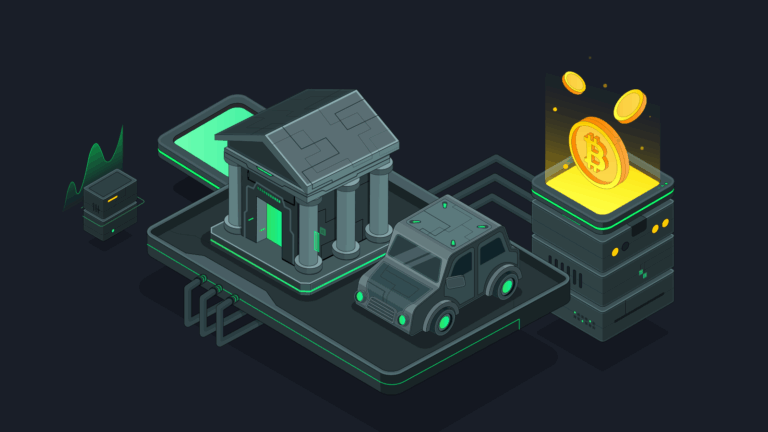
Cryptocurrency isn’t just for tech geeks or risk-takers anymore. In 2025, it’s a mainstream asset class, with growing tools, regulation, and public understanding. But let’s be clear: the space is still full of traps, scams, and hype.
Whether you’re a complete beginner or someone who dabbled during the 2021 bull run, this guide will walk you through how to start investing in crypto—the smart way.
Why People Are Still Getting Into Crypto
Hedge against inflation and currency risk
In many countries, crypto is seen as a financial escape route. If your local currency is depreciating or your bank limits access to your own savings, holding stablecoins or Bitcoin becomes more than just investment—it’s survival.
Portfolio diversification
We’re seeing family offices, investment firms, and even pension funds diversify a small percentage (often 1–5%) into crypto. The reasoning? Non-correlation to traditional markets, asymmetric upside, and exposure to innovation.
Earning passive income
Staking, lending, liquidity mining—crypto now offers multiple ways to earn yield. But it also comes with risks. More on that later.
Step 1: Understand What You’re Investing In
Know the asset types
There’s not just one type of crypto. Here’s a simple breakdown:
- Bitcoin (BTC): digital gold, limited supply, store of value
- Ethereum (ETH): programmable blockchain, smart contracts
- Stablecoins (USDT, USDC, etc.): pegged to fiat, often used for saving or trading
- Altcoins: smaller-cap coins that serve specific functions (Solana, Avalanche, Chainlink, etc.)
- Tokens/NFTs: digital assets representing ownership, access, or media
Don’t invest in something you don’t understand.
Research the use case
Ask: What problem is this project solving? Who’s using it? What stage is it at? Look for projects with real utility, growing communities, and transparent leadership.
Step 2: Choose the Right Platform
Centralized exchanges (CEXs)
The easiest way to start is with a centralized exchange like:
- Coinbase (global, beginner-friendly)
- Binance (large selection, low fees)
- Kraken (solid security, reputation)
- Bitstamp (EU-based, compliant)
Make sure the platform:
- Complies with your country’s regulations
- Offers insurance or guarantees on holdings
- Has clear withdrawal options (to your bank or wallet)
Decentralized exchanges (DEXs)
For those with more experience, platforms like Uniswap or PancakeSwap allow peer-to-peer swaps—without an intermediary. However, you manage your own security, wallets, and keys.
Cold storage & self-custody
Not your keys, not your coins. If you’re investing long-term, consider moving your assets to a hardware wallet like Ledger or Trezor for maximum safety.
Step 3: Avoid Common Mistakes
Don’t invest more than you can afford to lose
Crypto is still volatile. It can drop 50% in a week. Never invest money you need for rent, bills, or emergencies.
Don’t fall for hype or influencers
Just because someone on YouTube or Twitter shills a coin doesn’t mean it’s legit. Always DYOR — Do Your Own Research.
Don’t leave large sums on exchanges
Even reputable exchanges can be hacked, frozen, or shut down. For serious amounts, use cold storage or split your funds across platforms.
Don’t ignore fees and taxes
Each swap, withdrawal, or staking move might incur fees—or tax consequences. In 2025, most countries now tax crypto, even if regulations vary.
Step 4: Learn the Investment Strategies
Buy and hold (HODL)
The classic strategy. Buy BTC or ETH and forget about it for a few years. Historically, this has worked better than chasing trends.
Dollar-cost averaging (DCA)
Instead of buying all at once, invest a small fixed amount (e.g., $50/week). It smooths out volatility and avoids bad timing.
Active trading (not for beginners)
Some investors buy and sell frequently to capture short-term gains. This requires technical analysis skills, time, and strong discipline. It’s also risky.
Staking and yield farming
Locking tokens in protocols can generate returns, but yields are falling, and risks (protocol hacks, impermanent loss) remain.
Step 5: Stay Updated
Crypto moves fast. Platforms change, regulations evolve, scams adapt. Stay informed by:
- Subscribing to trusted newsletters (Bankless, Decrypt, Coin Bureau)
- Following credible voices on X (formerly Twitter)
- Joining local or online communities (Reddit, Telegram, Discord)
Knowledge compounds. The more you learn, the better your decisions.
Step 6: Plan Your Exit
Every investment needs a goal. Are you holding until a certain price? A certain year? A milestone (buying a car, a home, etc.)?
Set your exit strategy in advance. And don’t be afraid to take profits when markets are euphoric—no one ever went broke securing gains.
Final Thoughts
Crypto isn’t magic, and it’s not evil. It’s a technology-driven asset class still in its early stages. With the right approach—cautious, informed, and patient—you can explore this space without getting wrecked.
You don’t need to be a whale or a tech genius. You just need to be smart.







